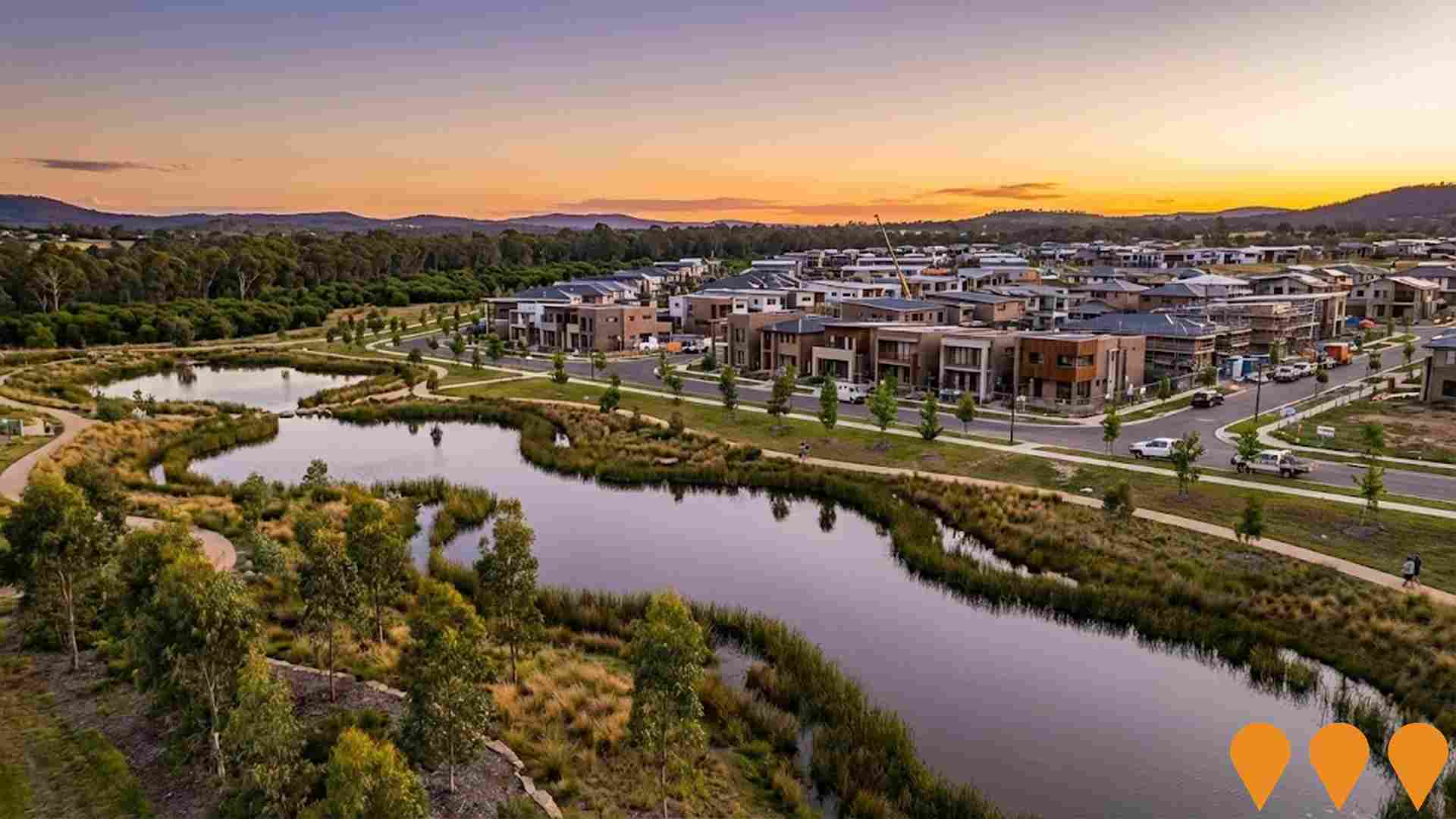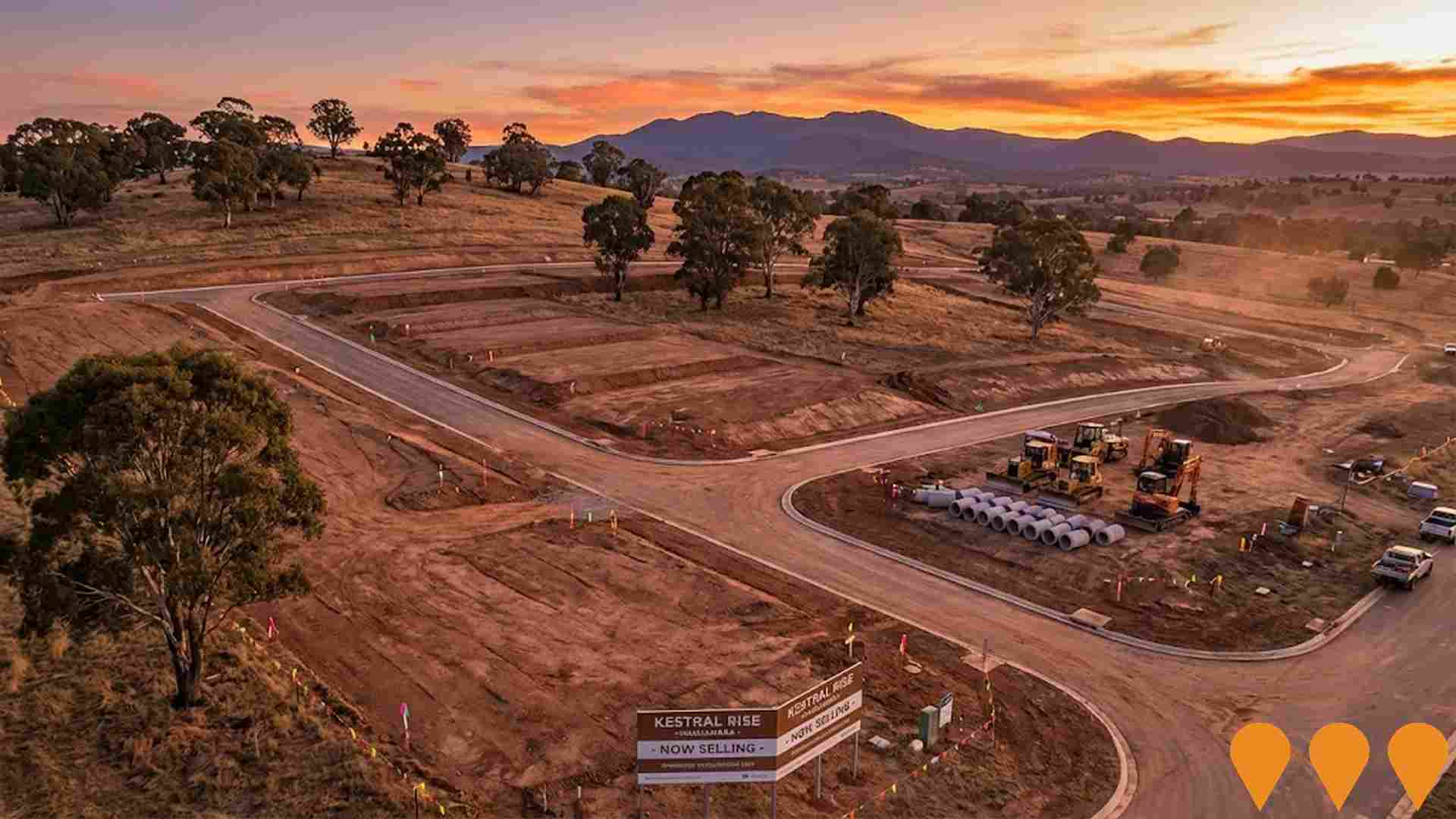Chart Color Schemes
est. as @ -- *
ABS ERP | -- people | --
2021 Census | -- people
Sales Activity
Curious about local property values? Filter the chart to assess the volume and appreciation (including resales) trends and regional comparisons, or scroll to the map below view this information at an individual property level.
Find a Recent Sale
Sales Detail
Population
Charnwood has shown very soft population growth performance across periods assessed by AreaSearch
As of Aug 2025, Charnwood's population is approximately 3,026, a decrease of 29 people from the 2021 Census figure of 3,055. This change is inferred from ABS estimates: 3,026 in June 2024 and three additional validated addresses since the Census date. The population density is around 1,626 persons per square kilometer, higher than national averages assessed by AreaSearch. Natural growth contributed about 63.8% of recent population gains. AreaSearch uses ABS/Geoscience Australia projections for each SA2 area, released in 2024 with a base year of 2022.
For areas not covered and years post-2032, ACT Government's SA2 area projections are adopted. Future demographic trends suggest a population decline by 28 persons to 2041. However, the 75 to 84 age group is projected to grow by 41 people during this period.
Frequently Asked Questions - Population
Development
The level of residential development activity in Charnwood is very low in comparison to the average area assessed nationally by AreaSearch
Charnwood averaged approximately three new dwelling approvals annually. Between financial years 2021 (FY-21) and 2025 (FY-25), 15 homes were approved, with no approvals recorded so far in FY-26. The population has declined recently, suggesting that new supply has kept pace with demand, offering buyers good choice.
New homes are constructed at an average cost of $167,000, below regional norms, indicating more affordable housing options for purchasers. In FY-26, $876,000 in commercial approvals have been registered, reflecting a predominantly residential focus. Compared to the Australian Capital Territory, Charnwood has significantly less development activity, 83.0% below the regional average per person. This scarcity typically strengthens demand and prices for existing properties, although development activity has increased recently. The area's established nature is indicated by its level being under the national average, potentially suggesting planning limitations. New building activity shows an equal split between detached houses (50.0%) and medium to high-density housing (50.0%), marking a significant shift from the current 87.0% houses pattern. This trend may reflect diminishing developable land availability and respond to evolving lifestyle preferences and housing affordability needs.
With around 758 people per approval, Charnwood is a mature, established area with an expected stable or declining population, potentially reducing pressure on housing and creating opportunities for buyers.
Frequently Asked Questions - Development
Infrastructure
Charnwood has emerging levels of nearby infrastructure activity, ranking in the 22ndth percentile nationally
No projects have been identified by AreaSearch that are likely to impact the area. Key projects include Ginninderry Stage 3 - The Valley Release, Ginninderry Estate - Stages 4-7 (Strathnairn & future Macnamara), The Valley Ponds - Stage 3 & Future Stages, and Kestral Rise - Macnamara.
Professional plan users can use the search below to filter and access additional projects.
INFRASTRUCTURE SEARCH
 Denotes AI-based impression for illustrative purposes only, not to be taken as definitive under any circumstances. Please follow links and conduct other investigations from the project's source for actual imagery. Developers and project owners wishing us to use original imagery please Contact Us and we will do so.
Denotes AI-based impression for illustrative purposes only, not to be taken as definitive under any circumstances. Please follow links and conduct other investigations from the project's source for actual imagery. Developers and project owners wishing us to use original imagery please Contact Us and we will do so.
Frequently Asked Questions - Infrastructure
Low and Mid-Rise Housing Policy
State-wide NSW planning reforms via amendments to the State Environmental Planning Policy to enable more diverse low and mid-rise housing (dual occupancies, terraces, townhouses, manor houses and residential flat buildings up to 6 storeys) in well-located areas within 800 m of selected train, metro and light-rail stations and town centres. Stage 1 (dual occupancies in R2 zones statewide) commenced 1 July 2024. Stage 2 (mid-rise apartments, terraces and dual occupancies near stations) commenced 28 February 2025. Expected to facilitate up to 112,000 additional homes over the next five years.
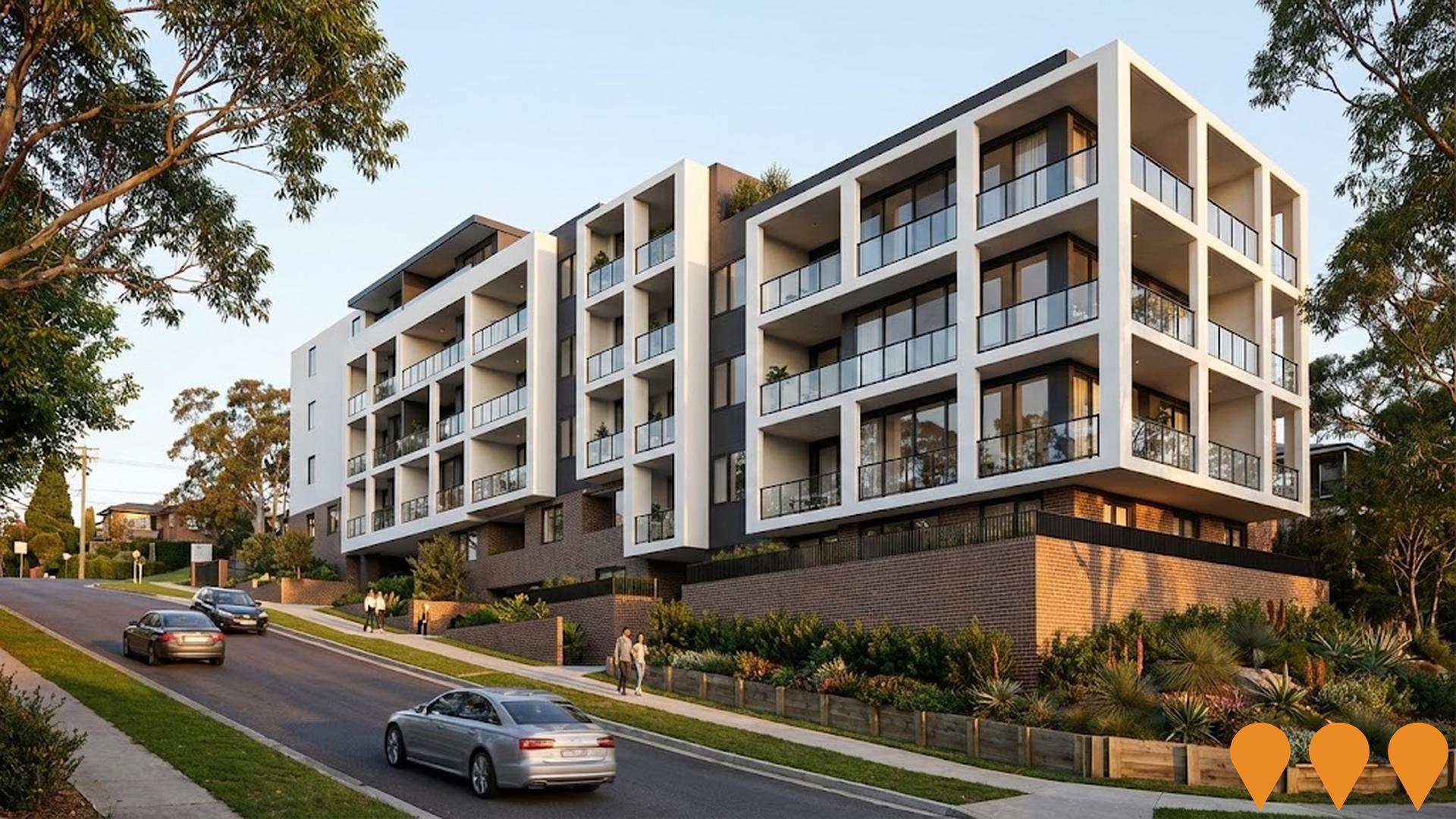
Ginninderry Estate - Stages 4-7 (Strathnairn & future Macnamara)
Canberra's largest master-planned community spanning the ACT-NSW border, delivering approximately 11,500 dwellings total, with ongoing stages immediately adjacent to and west of Dunlop.
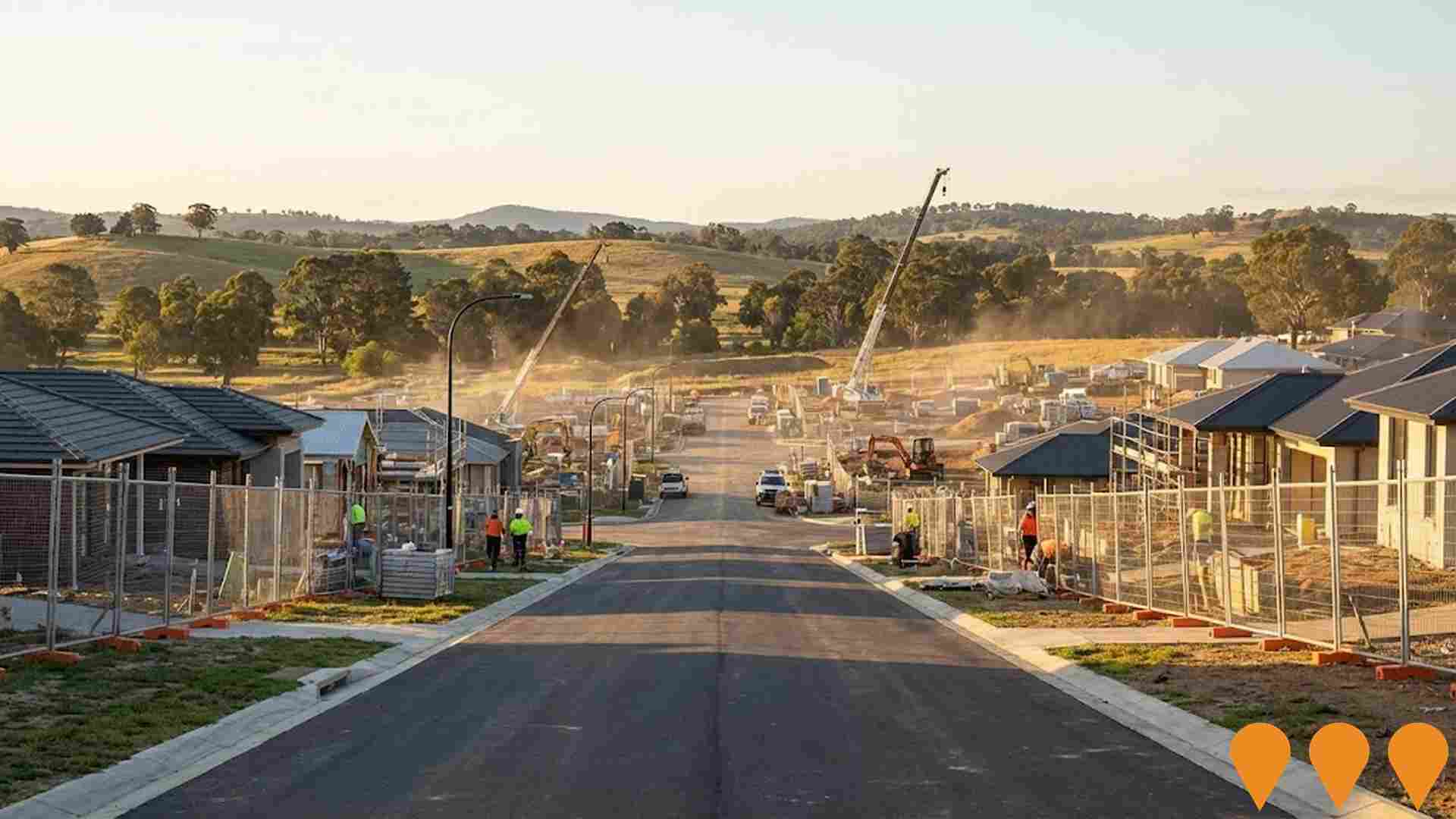
Enhanced bus and light rail corridors (Belconnen & Queanbeyan to Central Canberra)
ACT is progressing an integrated program to enhance high-frequency bus and future light rail corridors that link Belconnen and Queanbeyan with central Canberra. Light Rail Stage 2A (City to Commonwealth Park) commenced construction in early 2025 with services targeted from 2028, while planning and approvals continue for Stage 2B to Woden. The ACT Government has acknowledged and is planning upgrades for the Belconnen-to-City bus corridor as groundwork for a future east-west light rail Stage 3, and is coordinating cross-border public transport initiatives with NSW through the Queanbeyan Region Integrated Transport Plan and the ACT-NSW MoU for Regional Collaboration.
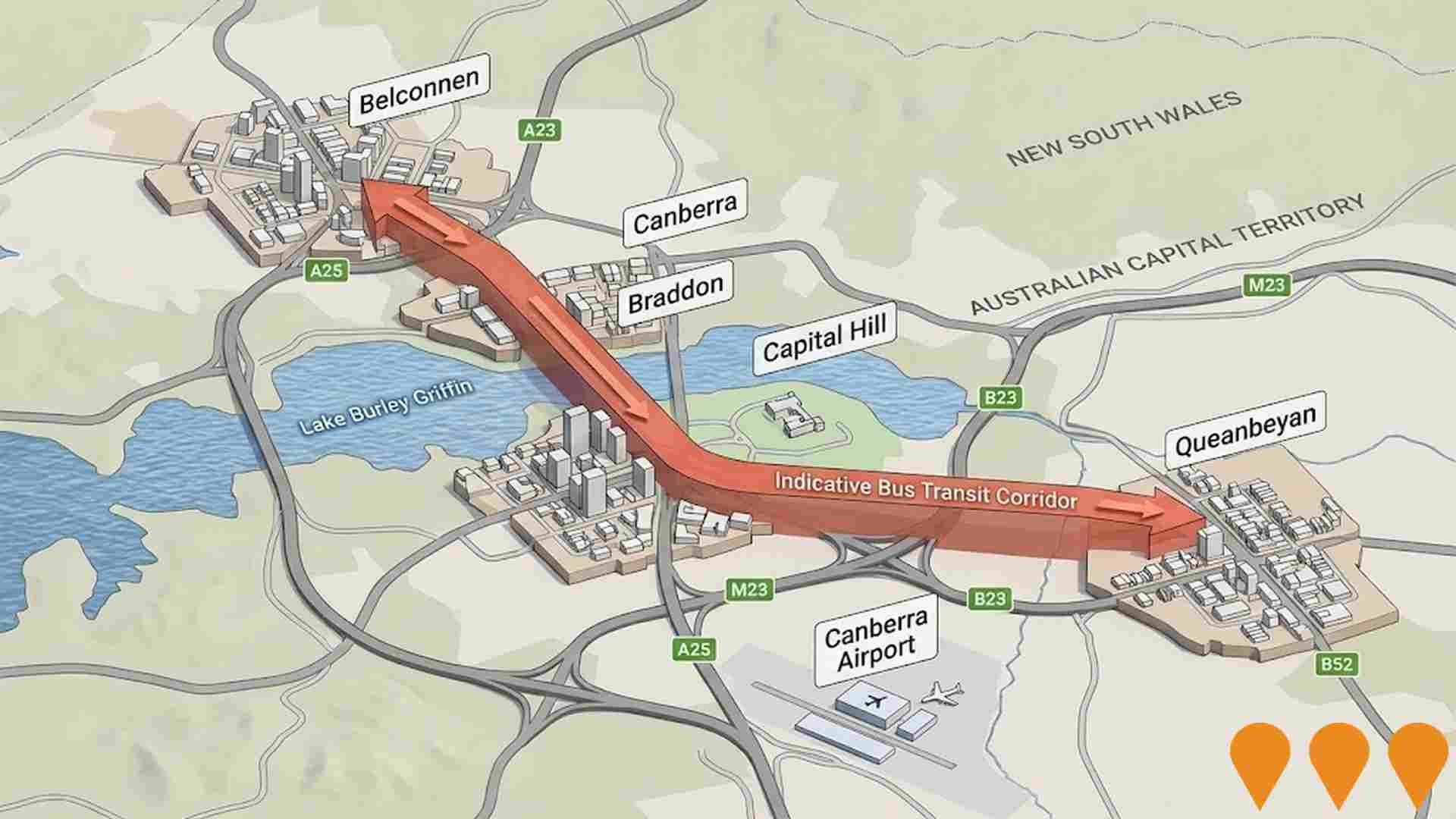
HumeLink
HumeLink is a new 500kV transmission line project connecting Wagga Wagga, Bannaby, and Maragle, spanning approximately 365 km. It includes new or upgraded infrastructure at four locations and aims to enhance the reliability and sustainability of the national electricity grid by increasing the integration of renewable energy sources such as wind and solar.
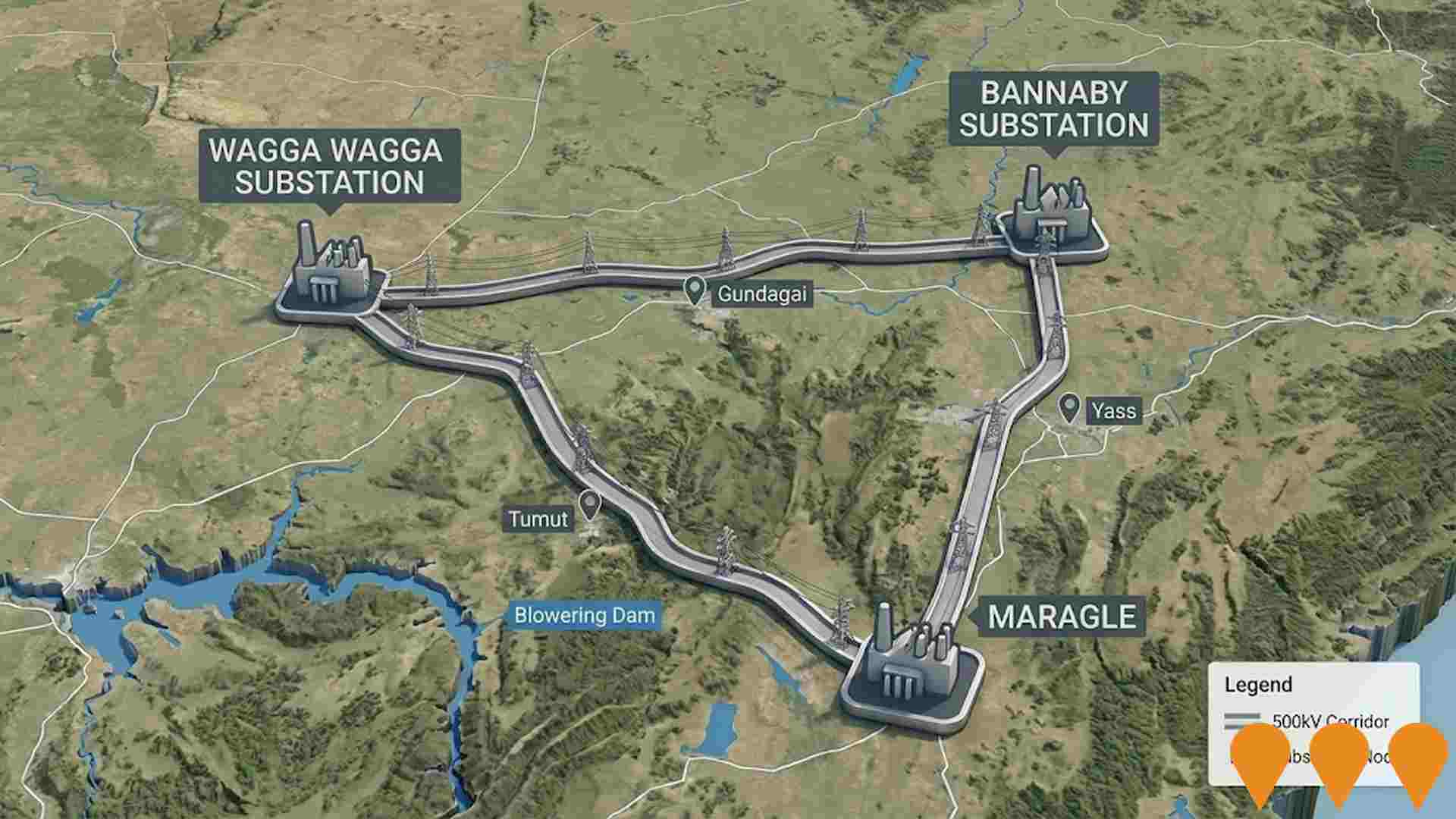
Macnamara Residential Estate
New greenfield suburb immediately north-west of Dunlop, part of the broader Ginninderry development, delivering over 1,800 homes plus local shops and schools.
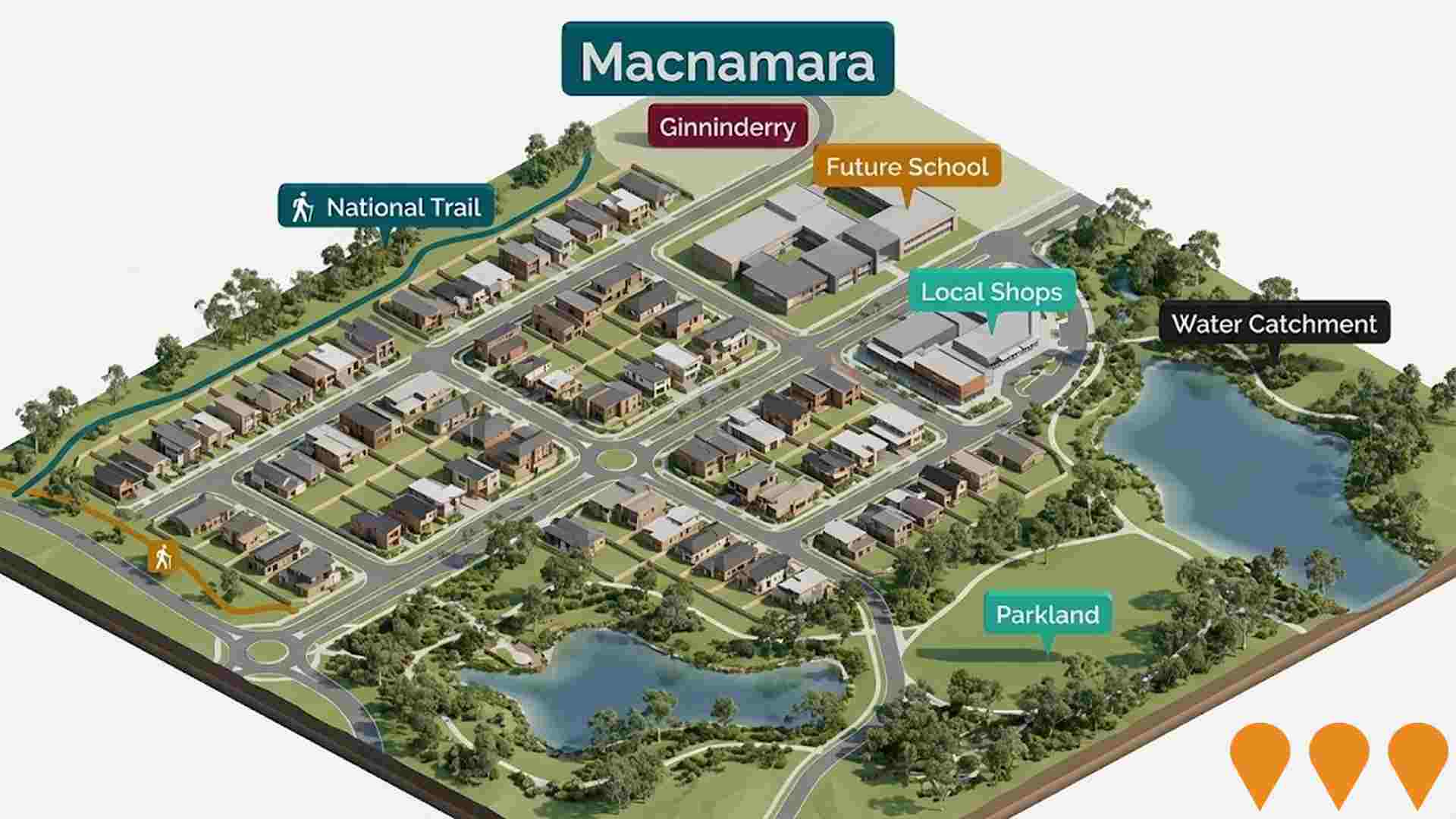
Queanbeyan Regional Integrated Transport Plan
Comprehensive transport planning initiative with 64 key actions for next 10 years. Addresses road safety, active transport connectivity, public transport availability, and future transport needs. Improved connections between Queanbeyan and ACT.
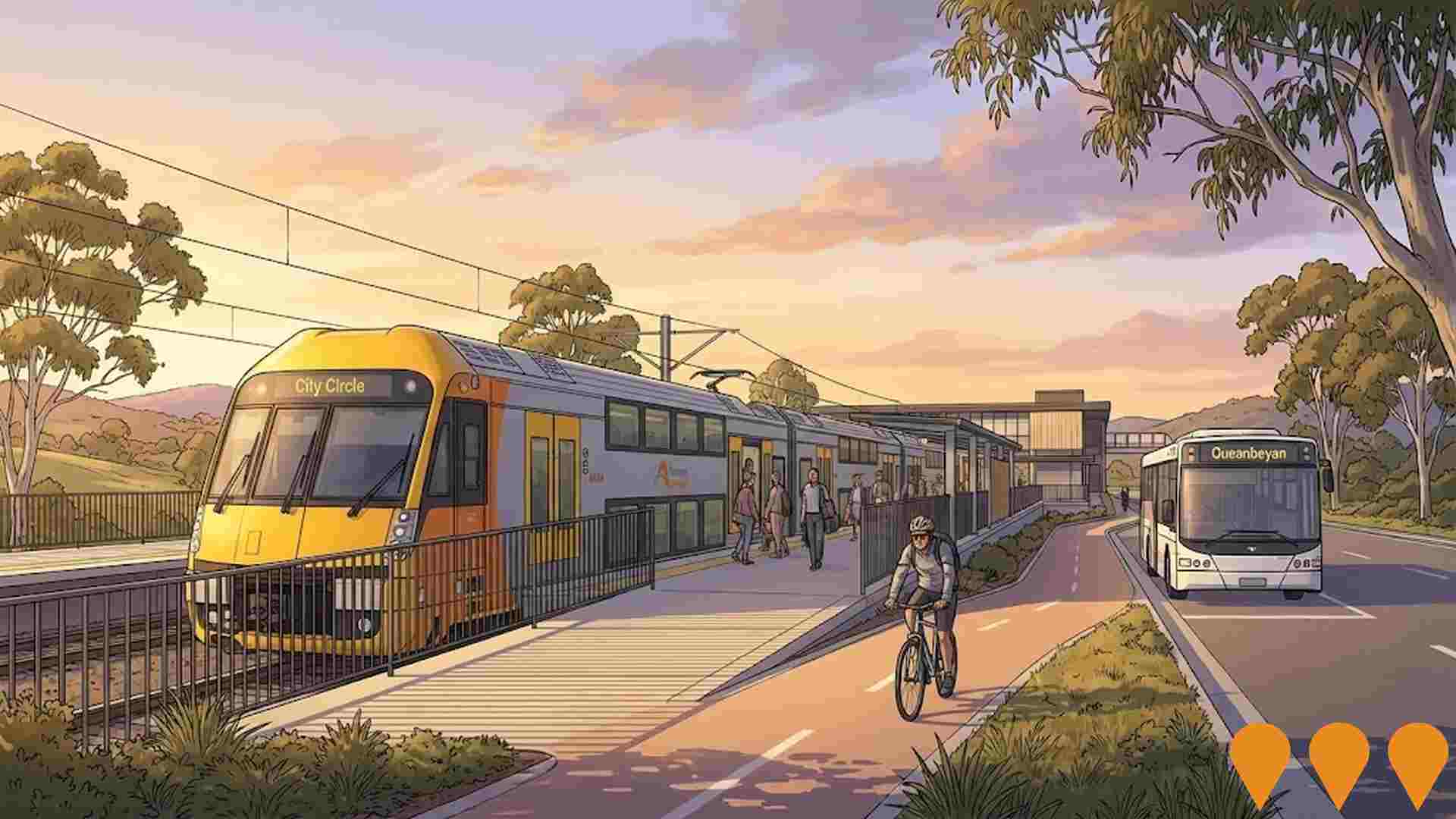
Big Canberra Battery (Williamsdale BESS)
A 250 MW / 500 MWh battery energy storage system at Williamsdale in southern Canberra, delivered by Eku Energy as Stream 1 of the ACT Government's Big Canberra Battery. Construction commenced in November 2024 with partners CPP and Tesla supplying Megapack systems. The asset will connect to Evoenergy's 132 kV network near the Williamsdale substation to provide two hours of dispatchable power, grid services and reliability for the ACT. Target operations in 2026.
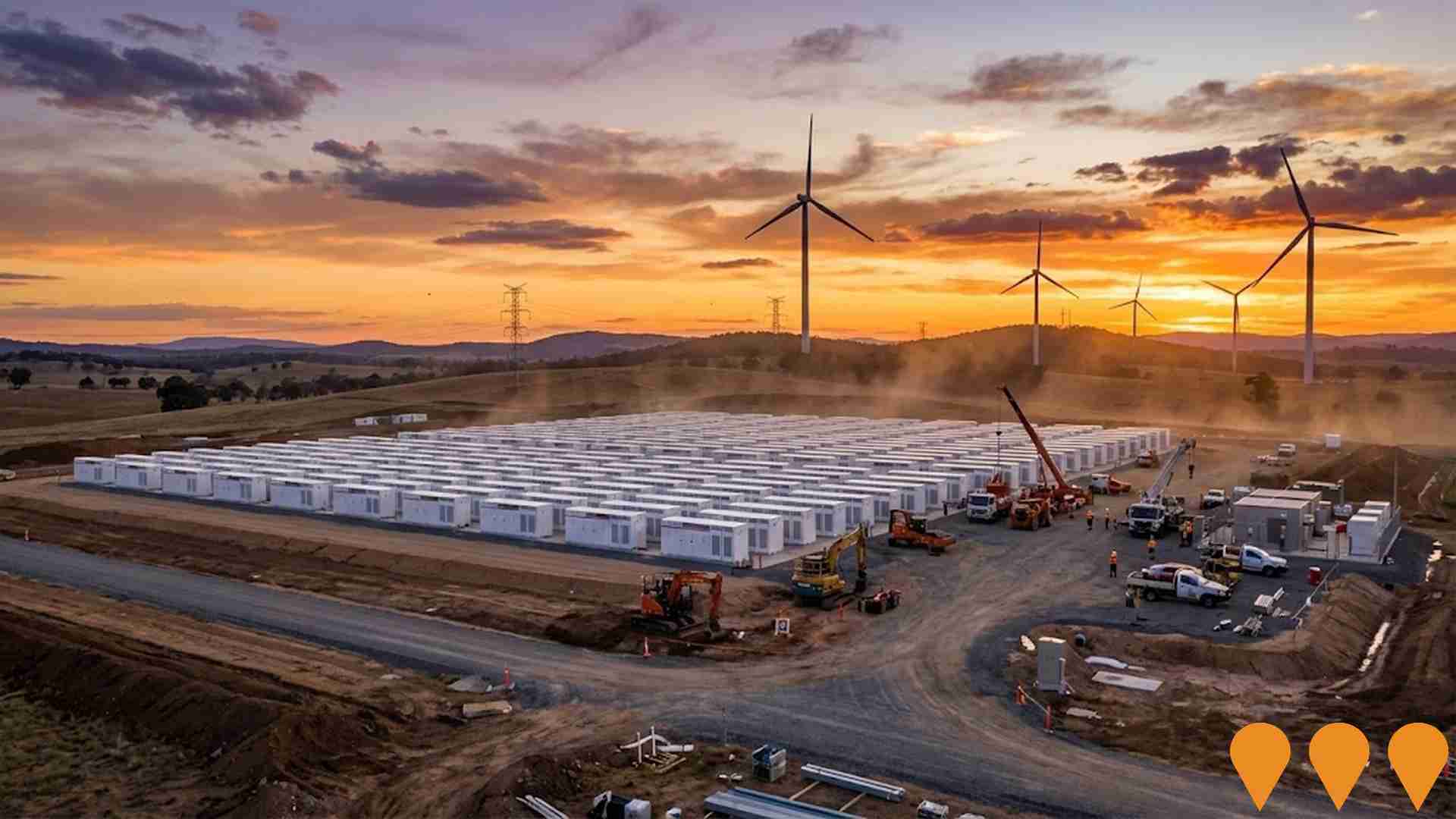
HumeLink East
HumeLink East is Transgrid's eastern package of the HumeLink transmission project. It delivers about 237 km of new 500 kV double-circuit overhead transmission lines from Bannaby to the Wondalga interface point and upgrades the existing 500 kV Bannaby substation. Transgrid has engaged Acciona and Genus in joint venture to design and construct the package. Enabling works began in early 2025, with main construction targeted to commence from mid to late August 2025 pending planning approvals.
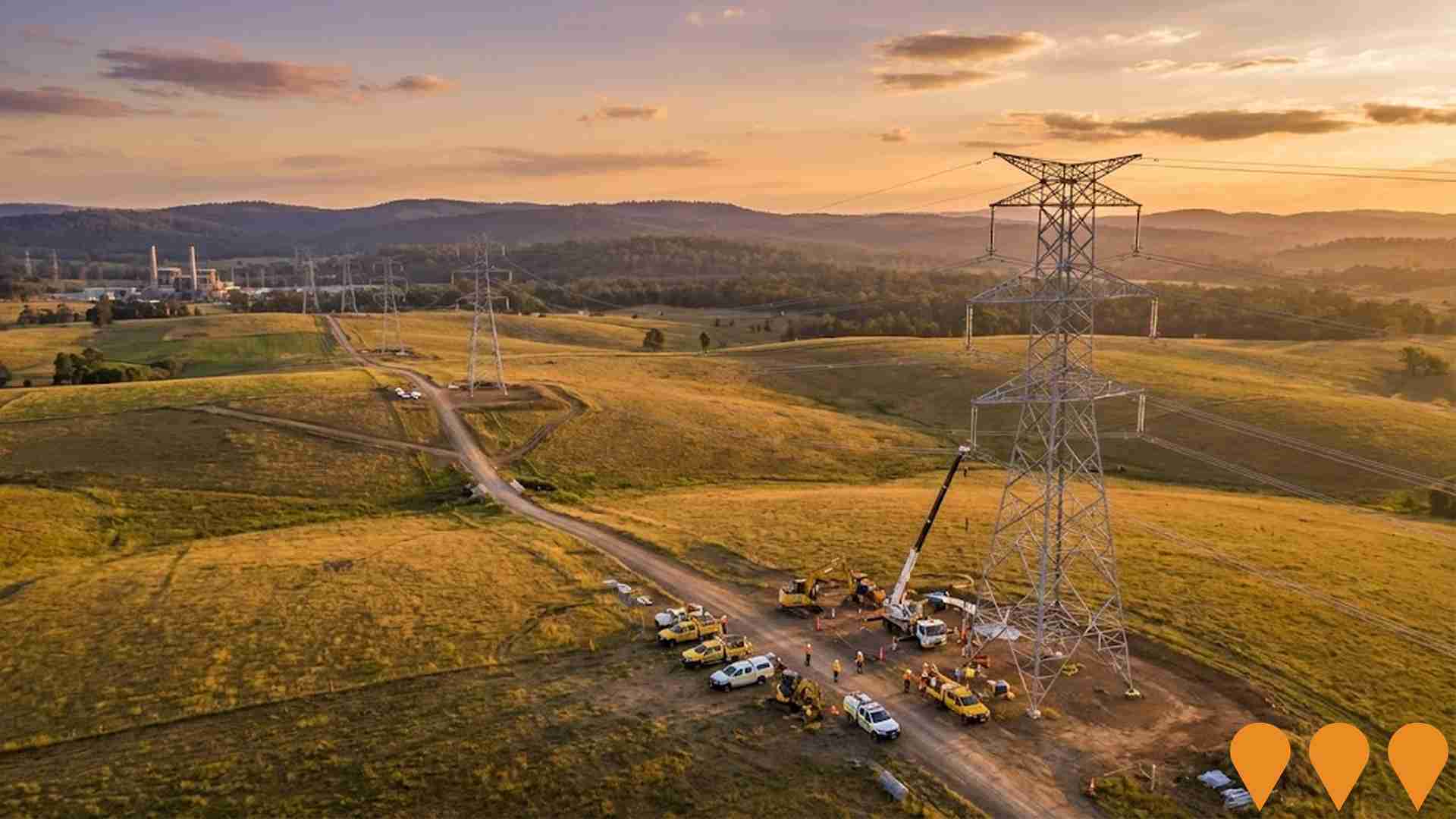
Employment
AreaSearch assessment indicates Charnwood faces employment challenges relative to the majority of Australian markets
Charnwood's workforce is skilled with notable representation in essential services sectors. The unemployment rate was 9.7% as of June 2025.
Employment growth over the past year was estimated at 3.2%. As of that date, 1,512 residents were employed while the unemployment rate was 6.3%, higher than the Australian Capital Territory's rate of 3.4%. Workforce participation was 66.0%, lower than the Australian Capital Territory's 69.6%. Key industries of employment among residents are public administration & safety, health care & social assistance, and construction.
Charnwood has a strong specialization in construction with an employment share 1.8 times the regional level. Public administration & safety had limited presence with 22.9% employment compared to 30.4% regionally. The area appears to offer limited local employment opportunities. Over a 12-month period, employment increased by 3.2%, labour force by 1.6%, and unemployment fell by 1.4 percentage points. In comparison, Australian Capital Territory saw employment rise by 1.9%, labour force grow by 1.6%, and unemployment fall by 0.3 percentage points. Jobs and Skills Australia's national employment forecasts from May 2025 project national employment growth of 6.6% over five years and 13.7% over ten years, with varying rates across industry sectors. Applying these projections to Charnwood's employment mix suggests local growth of approximately 6.4%% over five years and 13.1% over ten years, based on a simple weighting extrapolation for illustrative purposes.
Frequently Asked Questions - Employment
Income
Income analysis reveals strong economic positioning, with the area outperforming 60% of locations assessed nationally by AreaSearch
AreaSearch's aggregation of ATO data for financial year 2022 shows Charnwood had a median taxpayer income of $55,634 and an average income of $62,887. These figures are below the national averages of $68,638 and $83,634 in Australian Capital Territory respectively. Based on Wage Price Index growth since financial year 2022, estimated median and average incomes as of September 2025 would be approximately $63,200 and $71,440 respectively. According to the 2021 Census, personal income ranks at the 73rd percentile ($948 weekly), while household income is at the 54th percentile. The largest income segment comprises 38.7% of residents earning $1,500 - $2,999 weekly. High housing costs consume 16.7% of income, but disposable income ranks at the 54th percentile and the area's SEIFA income ranking places it in the 5th decile.
Frequently Asked Questions - Income
Housing
Charnwood is characterized by a predominantly suburban housing profile, with a higher proportion of rental properties than the broader region
In Charnwood, as per the latest Census evaluation, 87.1% of dwellings were houses, with the remaining 12.9% comprising semi-detached properties, apartments, and other types of dwellings. In contrast, the Australian Capital Territory had 69.4% houses and 30.5% other dwellings. Home ownership in Charnwood stood at 23.1%, with mortgaged dwellings accounting for 45.4% and rented dwellings making up 31.5%. The median monthly mortgage repayment in the area was $1,755, lower than the Australian Capital Territory average of $2,000. The median weekly rent figure in Charnwood was $380, compared to the Australian Capital Territory's $430. Nationally, Charnwood's mortgage repayments were lower than the Australian average of $1,863, while rents exceeded the national figure of $375.
Frequently Asked Questions - Housing
Household Composition
Charnwood has a typical household mix, with a fairly typical median household size
Family households constitute 69.3% of all households, including 29.3% couples with children, 20.9% couples without children, and 18.0% single parent families. Non-family households account for the remaining 30.7%, with lone person households at 27.4% and group households comprising 3.2%. The median household size is 2.5 people, which aligns with the Australian Capital Territory average.
Frequently Asked Questions - Households
Local Schools & Education
The educational profile of Charnwood exceeds national averages, with above-average qualification levels and academic performance metrics
The area's university qualification rate is 24.3%, significantly lower than the SA4 region average of 46.8%. Bachelor degrees are most common at 15.8%, followed by postgraduate qualifications (6.1%) and graduate diplomas (2.4%). Vocational credentials are prevalent, with 38.6% of residents aged 15+ holding them - advanced diplomas (12.1%) and certificates (26.5%). Educational participation is high at 29.5%, including 10.6% in primary education, 7.1% in secondary education, and 3.9% pursuing tertiary education.
Charnwood's three schools have a combined enrollment of 678 students, serving typical Australian school conditions (ICSEA: 1020) with balanced educational opportunities. The schools focus on primary education only, with secondary options available nearby. School capacity exceeds residential needs at 22.4 places per 100 residents compared to the regional average of 15.1, indicating Charnwood serves as an educational hub for the broader region. Note: where schools show 'n/a' for enrolments, please refer to the parent campus.
Frequently Asked Questions - Education
Schools Detail
Nearby Services & Amenities
Transport
Transport servicing is moderate compared to other areas nationally based on assessment of service frequency, route connectivity and accessibility
Transport analysis shows 21 active transport stops in operation within Charnwood. These are a mix of bus stops serviced by five individual routes. Together, these routes facilitate 516 weekly passenger trips.
Transport accessibility is rated excellent, with residents typically located 193 meters from the nearest stop. Service frequency averages 73 trips per day across all routes, equating to approximately 24 weekly trips per individual stop.
Frequently Asked Questions - Transport
Transport Stops Detail
Health
Health performance in Charnwood is lower than average with common health conditions somewhat prevalent across both younger and older age cohorts
Charnwood faces significant health challenges, with common health conditions prevalent among both younger and older age cohorts. Private health cover is slightly lower than the average SA2 area at approximately 51% of the total population (~1,546 people), compared to 57.1% in Australian Capital Territory.
Mental health issues affect 11.2% of residents, while asthma impacts 10.8%. A total of 63.6% of residents report being completely clear of medical ailments, compared to 68.1% across Australian Capital Territory. The area has 14.7% of residents aged 65 and over (446 people). Health outcomes among seniors present some challenges, broadly in line with the general population's health profile.
Frequently Asked Questions - Health
Cultural Diversity
The level of cultural diversity witnessed in Charnwood was found to be above average when compared nationally for a number of language and cultural background related metrics
Charnwood's cultural diversity is above average, with 22.5% of its population born overseas and 18.6% speaking a language other than English at home. Christianity is the predominant religion in Charnwood, comprising 43.6% of its population. Notably, the 'Other' category makes up 1.8%, slightly higher than the Australian Capital Territory's average of 1.3%.
In terms of ancestry, the top three groups are English (26.3%), Australian (25.2%), and Other (11.6%). Some ethnic groups show notable differences: Spanish is overrepresented at 0.6% compared to the regional average of 0.5%, Filipino at 2.1% versus 1.2%, and Russian at 0.4% against a regional average of 0.3%.
Frequently Asked Questions - Diversity
Age
Charnwood's population is younger than the national pattern
Charnwood's median age is 35, equal to the Australian Capital Territory's figure but slightly below Australia's 38 years. Compared to Australian Capital Territory, Charnwood has a higher proportion of residents aged 0-4 (7.6%) but fewer residents aged 25-34 (15.1%). Between the 2021 Census and the latest data, the 75-84 age group grew from 3.7% to 5.0%, while the 15-24 cohort increased from 10.7% to 11.8%. Conversely, the 55-64 cohort declined from 9.6% to 8.2%, and the 25-34 group dropped from 16.3% to 15.1%. By 2041, population forecasts indicate significant demographic changes for Charnwood. The 85+ cohort is projected to grow by 81%, adding 35 residents to reach 79. Residents aged 65 and older are expected to represent 69% of the total growth, while the 15-24 and 65-74 cohorts are anticipated to experience population declines.

